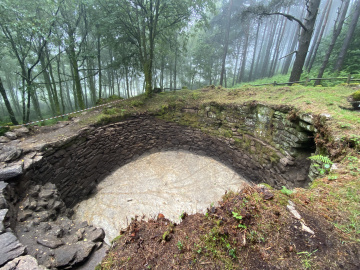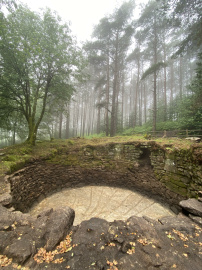

Xunqueira de Espadanedo Ice Houses
These structures were built in Galicia to store, preserve and distribute the snow that was invaluable for preserving food, making cold drinks and even for therapeutic uses.
These stony constructions, excavated in the ground have two different types, with two different functions: "pools" and "refrigerators". The pits were linked with the coolers as they were where the newly fallen snow was put before it could melt in the sun and rain. Later, the snow, now ice, was taken to the cooler to be stored between layers of straw, which kept the ice in perfect condition, for use during the hot summer months.
The origin of these structures dates back to the Little Ice Age, which occurred from the second half of the 15th to the beginning of the 18th century. During this time, temperatures fell, there was more snow, and it reached to lower altitudes, which led a variety of institutions, mainly nuns and Cistercian monasteries, to build “pits” and “coolers”.
Documents from the 17th to 19th century tell of the existence of ice houses in the Cabeza de Meda range. Two belonged to the Monastery of Santa María de Xunqueira de Espadanedo, one to the town, a few to private individuals and others to the monasteries of Santa Cristina and Santo Estevo. Of this large number of ice houses in the Meda area, there are two, recently reclaimed ones, which have been preserved to this day: one in Parada de Sil and the other that is shown in the photographs, located within the municipality of Xunqueira de Espadanedo.
Neveiro Xunqueira
Information and contact

Monte Meda
Xunqueira de Espadanedo
Ourense
 Directions
Directions 




 What would you improve?
What would you improve?